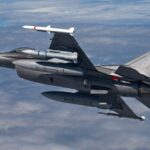
The Air Force’s contract award for its multi-billion dollar next-generation space surveillance radar known as Space Fence could be further delayed as the Pentagon determines whether it can afford it in an era of tightening budgets. “The award is being held up while we determine whether or not this is a priority for the Department,” Air Force Space Command (AFSPC) chief Gen. William Shelton said yesterday at a Peter Huessy congressional breakfast series event on Capitol Hill. Air Force Space…













